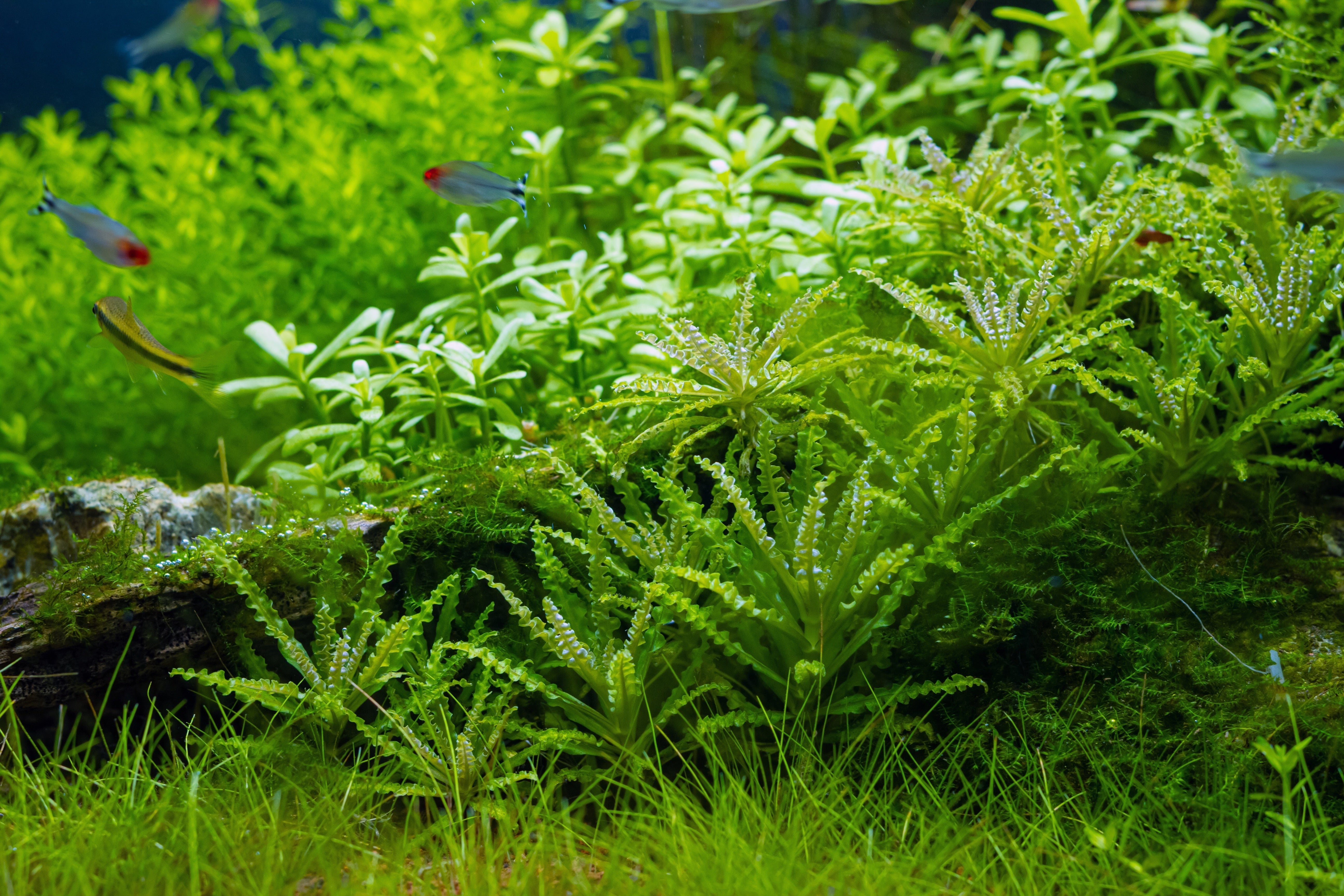Table of Contents
Goldfish is one of the most popular freshwater aquarium fish. With vibrant colors and personalities, goldfish is a great beginner fish for anyone, even kids. But it's difficult to choose the right live aquarium plants for goldfish tank because they eat almost any aquarium plants available.

However, live plants offer many benefits, not only for decoration purposes but also to keep the water clean by lowering nitrites and nitrates and providing shelter for your fish. So how to maintain a goldfish aquarium with live plants and also keep them safe from goldfish's eating habit? Here is a list of top 5 best plants for your aquarium that are easy to care for and strong enough to stand up to the sabotage of your goldfish.
1. Anubias

Anubias plant is one of the most popular plants for aquarium that comes in many varieties and requires very little care to keep them growing. Anubias is also the best plant in an aquarium with goldfish. Because of thick and rubbery leaves, this plant can survive many things, including goldfish.
Anubias plants do well under low lighting and no need to add fertilizers. They don’t require substrate and prefer to have their roots uncovered. Therefore, an easy way to plant them in a goldfish aquarium is to attach the plants to a piece of rock or wood to hold it down by using super glue or sewing thread. Well, a great option to rebuild your goldfish tank, isn’t it?
Marimo Moss Ball
Marimo moss ball is actually a species of green algae known as Aegagropila linnaei and look beautiful with their round shape. Goldfish are not likely to eat them but they do enjoy kicking them around the bottom of their tank for fun! Therefore, this plant is considered as a great addition to the goldfish tank.
Marimo moss ball is called the easiest aquarium plant because all you need to do is just place this plant in the tank and it's done. They grow extremely slowly and don’t require any special attention. Marimo moss ball enjoys cool water, low lighting and can live for a long time with good care. So why don't you give this new toy to your goldfish?
3. Java Fern

Java fern is a great beginner live plant for goldfish aquarium, just like Anubias. Java fern can effectively resist the attacks of goldfish because of their tough, fibrous leaves. In addition, it doesn’t taste good to goldfish.
It’s not a big deal to take care of this plant. Java fern does well in low to medium lighting and is not demanding in fertilizer requirements. This plant prefers to have its roots left uncovered instead of buried in aquarium soil. With super glue, you can easily attach the plant to driftwood or rock. This plant propagates by growing tiny plants at the end of its leaves. Under the right conditions, Java fern can grow up to 14 inches and definitely become an impressive background to your aquarium.
4. Hornwort
Hornwort is also known as Coon’s tail because of its shape. It is a very flexible plant with low demands and can grow in many different environments. This plant does not require substrate or fertilizers. All you need to pay attention to is providing this plant with medium lighting. It’s probably one of the only plants that can survive in a pond through winter outdoors.
Goldfish don’t find Hornwort a delicious food due to the tough needles instead of tender leaves. It means that goldfish will leave this plant alone. It’s a fast-growing plant that can grow up to several inches a week in good conditions. So as long as you have enough space for it, it’s a great background aquarium plant in your goldfish tank.
5.Vallisneria
Vallisneria is a freshwater aquatic plant, commonly called eelgrass, tape grass, or Vallis. It’s a favorite aquarium plant of many people because of its ease of care and beauty. There are different types of Vallisneria, and all seem to work fine in goldfish aquarium. This plant has beautiful long green leaves like grass and can grow fast in a short period to create a jungle inside your fish tank. Goldfish prefer to swim through this jungle instead of eating them.
This plant needs to plant on the substrate, preferably plain gravel or coarse sand. You also need to feed them with fertilizers and provide them with light. Vallisneria propagates by shooting out runners and don't forget to prune their overgrown leaves frequently.


























